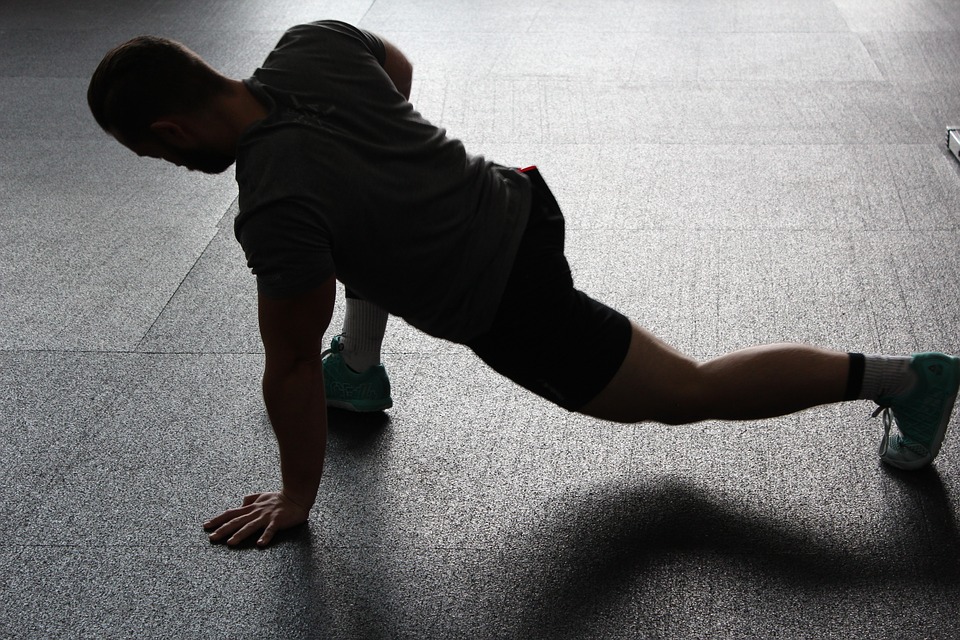When we think about working out, our muscles are usually top of mind. After all, most of our fitness goals seem to surround our muscles: Add 20 lbs to my back squat. Improve my pulling strength. Improve my pushing strength. Etc.
We do much less thinking about our joints.
Why?
Probably because improving our ankle flexibility or our shoulder stability sounds much less glamorous than boasting a 30 lb deadlift or squat PR.
But then a joint injury happens, and suddenly building strength isn’t even an option…
It shouldn’t take an injury to start prioritizing joint health.
Joint health isn’t just a concern for those with osteoarthritis or other degenerative joint diseases. We all should be thinking about our joints—particularly how to keep them healthy as we age, so that we can continue to be active until we’re 85 years old and beyond.
So, how can we ensure that we’re doing everything we can to promote healthy joint aging?
Here are a few key tips …
Don’t Sit Around
If you already show up to work out three to five days a week, that’s a great start. Keeping muscles, bones and ligaments strong goes a long way in keeping your joints strong, too.
But don’t forget the rest of the day—when you’re not at the gym. Simply put, less movement means more stiffness. So don’t sit (or stand) for too long in the same position. A good rule of thumb is to change your position at least once every 15-20 minutes. Going beyond that will really start to stiffen things up. Whether you’re working at a desk or watching Netflix, get up and move around periodically. Your joints will reward you with less stiffness.
Perfect Form
Again, this goes without saying, but poor form—things like hyperextending your spine during a shoulder press, or deadlifting or squatting with your knees caving in—can lead to joint injuries.
So the next time you’re tempted to add more weight to a bar than you might be able to handle with perfect form, stop and think about your joint health.
Posture
Generally speaking, poor posture is not good for your joints. Ensuring good posture throughout the day (standing and sitting up straight) will go a long way to keeping your joints feeling strong.
Avoid slouching at all costs! If you spend a lot of time at a desk, make a mental note to correct your posture throughout the day. You can even set a reminder on your phone.
Another tip if you are sitting at your desk is to scoot your butt closer to the edge of the chair and actually sit on your “sit bones” at the bottom of your hips instead of your hamstrings (the ischial tuberosity is known as the “sit bone”. You have one on each side of the hip and it just takes a quick Google search to see where they’re actually located so you can sit on them). This will keep your hamstrings from being sandwiched into the chair, which will help to keep them from stiffening up too much.
Warm-up
How much better do you feel lifting or conditioning when you’re properly warmed up? Best case scenario, show up 15 to 20 minutes before your private coaching session or class and prep the joints that will be most taxed that day.
If you’re not sure what to do, talk to your coach and come up with a warm-up plan that gets you ready for training, however, just 10 minutes on the Assault Bike, rower, or a light jog will be enough to get your joints lubricated, warmed up, and ready to go. Think about the analogy of starting up your car first thing in the morning in the middle of winter. Are you going to hop in, turn the key, and just let it rip from 0 to 60 mph without letting it warm up a little first? Probably not…but if you do, I wish you the best of luck with your future car maintenance.
Core is Key
A strong core goes a long way in preventing injuries. Adding some core accessory work—focusing on your deep core muscles, low back, hamstrings and glutes—to the end of your training sessions is a good idea. Again, if you’re not sure what to do, ask your coach for a core training plan.
Healthy weight
This one might go without saying, but if you’re overweight, losing weight might be the most important thing you can do for your joints. Carrying around extra poundage is hard on your knees, hips and back, which support that excess weight.
Even losing a few pounds can make a difference, as pressure is reduced from those weight-bearing joints, and your risk of injury decreases. Have a discussion with your coach about what weight and body fat percentage are most optimal for you based on your goals.
Diet, Diet, Diet
While diet is always controversial, science says food that helps reduce inflammation goes a long way in helping joint health. Foods like Omega-3 rich fish (salmon, mackerel, and sardines) or fish oil supplements, leafy dark green vegetables, such as spinach and kale, and nuts, such as almonds, walnuts, brazil nuts, and macadamias are all good for reducing inflammation and promoting joint health.
WATER
Drink more freaking water! Period. And no, 5 cans of La Croix or other flavored, concentrated drinks or juices don’t count. I’m talking about pure, plain water. Chemical reactions in your body that are essential to everyday living occur every second of every day you’re alive; and guess what…they REQUIRE water. So, if you’re constantly lethargic, check your water intake throughout the day. When you’re chronically dehydrated, it’s just bad news for your joints also.
Here are a couple tips for water intake:
- Drink at least half your body weight (lbs) in ounces at a bare MINIMUM. You all train hard, which means you lose more fluids than the average person, so you will probably need more
- Although carrying around a giant water bottle with you all day can work very well, this can be quite cumbersome. I’ve found it a little easier to crush a couple cups of water whenever I start to feel thirsty throughout the day. If you’re near a water fountain or have water on hand, drink until you start to get full (it doesn’t take much, about 1.5-2 cups) and your thirst is satisfied. The “full” feeling will dissipate soon and you’ll be nice and hydrated for the next hour or two. Repeat throughout the day
When it comes to joints, the old adage holds true: ‘An ounce of prevention is worth a pound of cure’.
In other words, don’t wait until you’re injured to start thinking about your joints.

